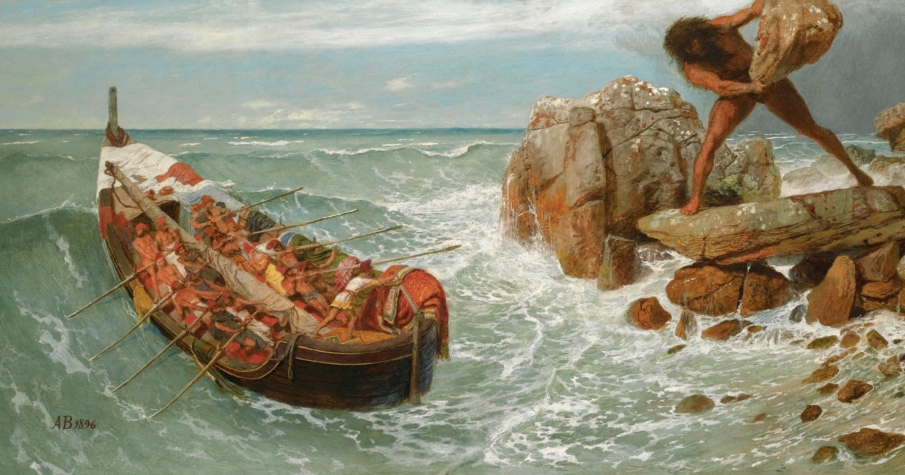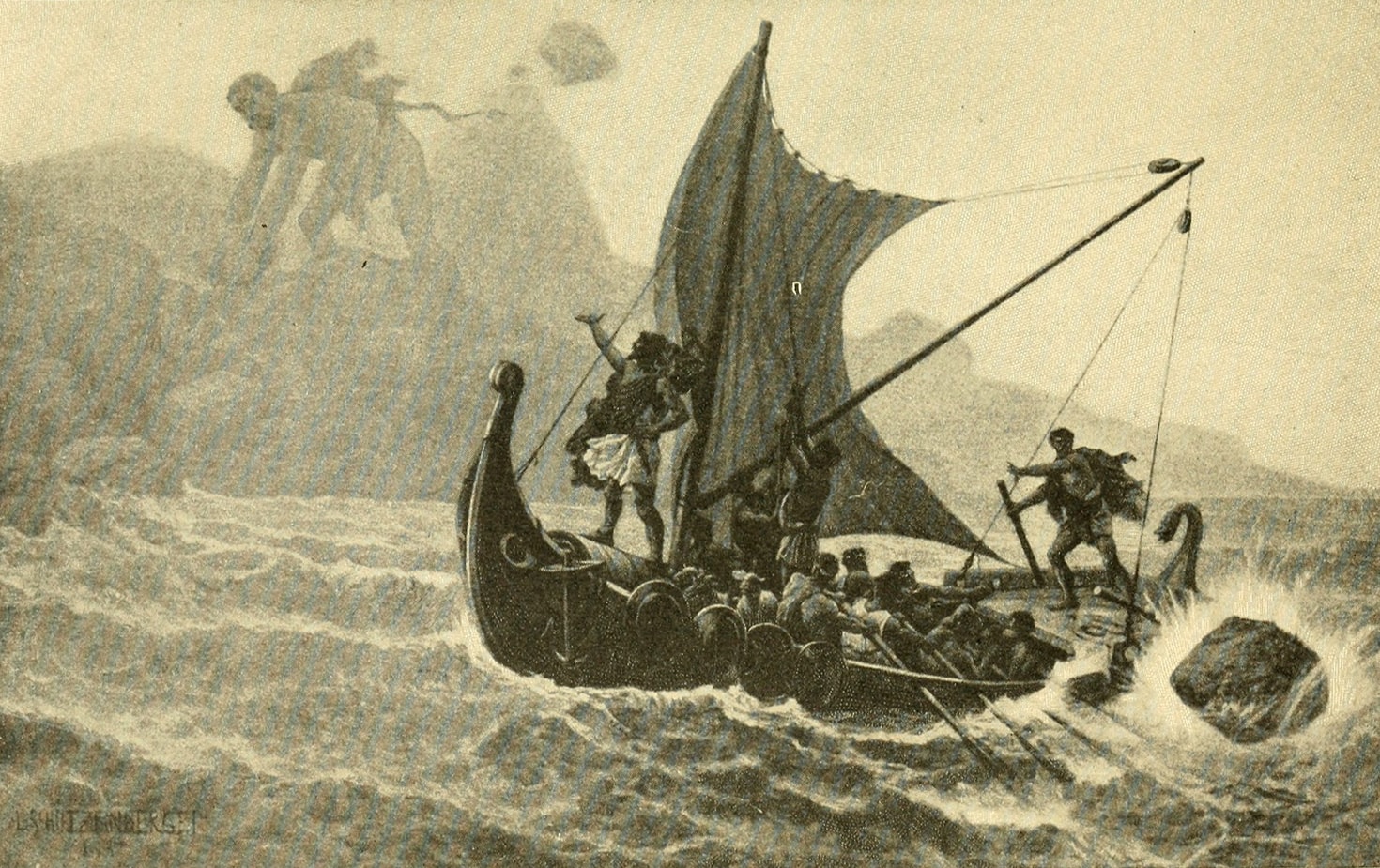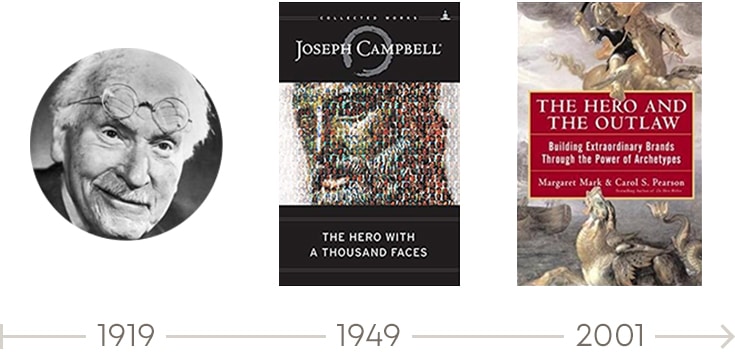
How to See Around the Corner: Positioning Your Company for Market Shifts
From the economy to customer behavior, many variables could impact your business’ viability in the future. Learn how to look around the corner to what’s ahead.

Take a moment to imagine your favorite story.
It could be a classic story, like the works of Shakespeare or Hans Christian Andersen, or one from ancient mythology like Odysseus or Hercules… or maybe a more contemporary example, like Star Wars or (if you’re like me) Harry Potter. Whatever it is, close your eyes and hold the story in your mind. Got it?

Without knowing anything about the story you chose, I’m willing to bet that it has a likeable protagonist. Flawed, perhaps, but on a mission toward the greater good; you’re rooting for her. I’d also wager that our main character meets a mentor at some point – someone who helps her understand the world around her and the journey ahead. Maybe there’s also a maternal figure who takes our hero under her wing and provides care and comfort. There is probably also a loyal best friend, a love interest, and – somewhere along the way – a comic relief.
How’d I do?
This isn’t just advanced guesswork. These are archetypes – a common palette of characters that exist in almost every story told throughout history… as well as in some of the most successful brands.
Swiss psychiatrist Carl Jung first introduced the term “archetype” in 1919 to describe highly developed elements of our collective unconscious, which emerge as character motifs understood across cultural divides – like “the mother” and “the jokester,” among others.
These archetypes are also found in the monomyth outlined by Joseph Campbell in The Hero with a Thousand Faces – where he details the common characters and story arcs that comprise all the world’s religions, artwork, and mythologies. We’re drawn to these stories not because of the way they’re told, or the language the writers or poets used, but because they represent elements common to our collective human experience – they appeal to something deep within our psyche.

It was Margaret Mark who first applied these archetypes to marketing and branding, in her book The Hero and the Outlaw. We’ve long known that storytelling was a powerful marketing tool, and Mark expanded upon the idea by adding archetypes to our branding toolbox.
It is estimated that in as much as 80% of cases we make a decision before being rationally aware of it. The power of identifying a brand with an archetype is that it already exists deep within our subconscious — it does not need to be created. So, in low-engagement contexts (like a website) where you only have seconds to make an impression, archetypes require less cognitive processing. It’s like saying, “You know that one thing you love and trust already? This is like that.”
We’ve alluded to a few archetypes already – the hero and the sage among them. Take a look at the full set of 12 archetypes, and which brands have used them to their marketing advantage.
Also known as the seeker, adventurer, iconoclast, wanderer, individualist, or pilgrim, the Explorer seeks new experiences and desires and escape from entrapment and boredom.
Showcasing their drivers discovering and exploring remote parts of the world or just going on epic adventures, Jeep appeals to the individual who craves freedom and wants to explore the great outdoors.
The Explorer archetype may be right for your brand if:
Also known as Pollyanna, utopian, traditionalist, naïve, mystic, saint, romantic, or dreamer, the Innocent’s gifts are faith and optimism. It desires purity, goodness, and simplicity.
From campaigns like Mean Joe Green not being so mean after all, to cuddly polar bears, Coca-Cola has always represented American idealism. It appeals to a customer seeking an experience of peace and goodness – exemplified in one of their most famous ads in 1971: “I’d like to buy the world a coke.”
The Innocent archetype may be right for your brand if:
Also known as the the regular jane, average joe everyman, the common man, the guy or gal next door, the realist, the working stiff, the solid citizen, or the good neighbor, the Regular Guy seeks connection and equality with others – believing in the natural dignity of every person regardless of his or her abilities or circumstances.
Unpretentious and practical, Ikea’s brand makes inspiration accessible to all people – no matter your age, ethnicity, or passion. Everyone deserves to be inspired to become their best self, right from their own home.
https://www.youtube.com/watch?v=IX1TUTZNt_Q
The Regular Guy archetype may be right for your brand if:
Also known as the warrior, the crusader, the rescuer, the superhero, the soldier, the winning athlete, the dragon slayer, or the competitor, the Hero’s desire is to prove their worth through courageous and difficult action.
At the forefront of all Hero brands, Nike stands proud and courageous. Their slogan, “Just do it” sums up their focus. They inspire, motivate and cheerlead their customers to do more, be more and have more.
The Hero archetype may be right for your brand if:
Also known as the caretaker, altruist, saint, parent, helper, or supporter, the Caregiver is known for compassion and generosity – and desires to help, nurture, and care for others.
A true Caregiver brand, Johnson & Johnson presents themselves as someone to trust, because they care and empathize with their audience.
https://youtu.be/gTMuh6AF3A0
The Caregiver archetype may be right for your brand if:
Also known as the outlaw, the revolutionary, the villain, the wild man or woman, the misfit, the enemy, or the iconoclast, the Rebel seeks to disrupt, destroy, or shock by overturning what isn’t working. They often identify as an outsider – dissociating from the values of the group or society in a way that flies in the face of conventional behaviors and morality.
Starting even with the company’s moniker, Virgin Airlines positioned itself as provocative, outlandish, and rebellious – not a brand to adhere to the status quo.
The Rebel archetype may be right for your brand if:
Also known as partner, friend, intimate, matchmaker, enthusiast, connoisseur, sensualist, spouse, team builder, or harmonizer, the Lover seeks to create close and lasting relationships, and to achieve intimacy, luxury or indulgence. The Lover encompasses all 5 states of love, which include; parental, familial, friendships, spiritual, and romantic.
Hallmark is a perfect example of a Lover brand, since they facilitate connection for every relationship in your life. From National Boss Day to National Nurses Day, you turn to Hallmark whenever you want to show someone you are thinking of and appreciate them. Hallmark leads to closeness.
The Lover archetype may be right for your brand if:
Also known as the artist, innovator, inventor, musician, writer, or dreamer, the Creator promotes innovation and self-expression – and speaks to visionaries, builders, and DIYers. The Creator's purpose in life is to see new ideas take shape and to see visions realized.
The quintessential Creator, Lego maintains an unwavering commitment to creativity, imagination, unlimited potential, discovery, and constructivism.
The Creator archetype may be right for your brand if:
Also known as the fool, trickster, joker, punster, entertainer, clown, prankster, practical joker, or comedian, the Jester brings out the playful attributes of the inner child encouraging impulsive and unrestrained behavior.
After a 70-year tenure as your grandpa’s cologne, Old Spice completely rebranded in 2010 – and did so with a humor that was so incomprehensible that it became memorable.
The Jester archetype may be right for your brand if:
Also known as the expert, scholar, detective, oracle, evaluator, advisor, philosopher, researcher, thinker, planner, professional, mentor, teacher, or contemplative, the Sage is constantly seeking truth – and to find answers to life’s questions. They thrive on knowledge and being in the know, and they enjoy sharing their findings with others to help benefit everyone.
Audi is all about knowledge, finding solutions, being the first to solve problems, embrace technology, or adapt their thinking expertise for the greater good of their vehicles. In this ad, Audi educates the consumer about the history of light while demonstrating Audi's expertise in this one facet of their vehicle design.
The Sage archetype may be right for your brand if:
Also known as the visionary, catalyst, innovator, charismatic leader, mediator, shaman, healer, or medicine man or woman, the Magician’s goal is to make dreams come true by transforming the ordinary into the extraordinary. The outcome of a Magician brand is often amazement and wonder.
Everything Disney touches turns to magic. The experiences that they create, the characters, the movies, the music – Disney creates wonder at every turn. They make the impossible, possible. They bring a vision to life, inspiring children and adults all over the world.
The Magician archetype may be right for your brand if:
Also known as the boss, leader, aristocrat, parent, politician, responsible citizen, role model, manage, or administrator, the Ruler is motivated by maintaining high standards and priding themselves on being a leader in their industry. They want to create an environment of prosperity, security, and stability in a chaotic world.
Starting with their slogan, “the best or nothing,” Mercedes exemplifies the Ruler archetype by being the leader – setting the rules others will follow, even competitors. In this king of the jungle ad, Mercedes is suggesting to their audience that they can be rulers too.
The Ruler archetype may be right for your brand if:
At Kinesis, we take all our clients through an archetype exercise as part of our branding process – helping them understand what role they play in their customers’ lives, and which character accurately expresses their value proposition. We then align brands with archetypes using what we call a brand story – an underlying metaphor which permeates through all design and messaging, driving home the archetype in a way that is subtle but familiar.
Interested in learning more about Kinesis’ brand transformations? Check out some of our work.
Get insights like this straight to your inbox.